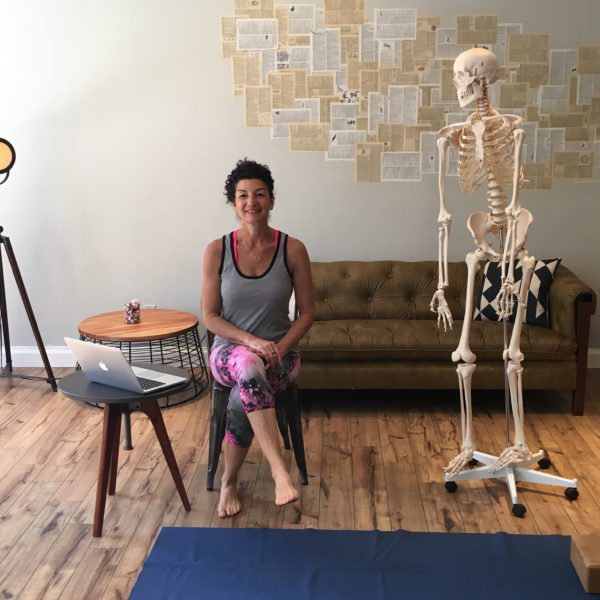
I recently wrote a post about a suggested approach to help you in answering student questions after class.
To read that post, visit here.Â
The post was inspired by my own transition in my own teaching from panic that someone would ask me a question (“What if I don’t know the answer?”) to sheer joy that people ask me questions about their practice and their bodies after class (“Great! A chance for discussion!”)
If you’re a yoga teacher and share that fear of “not knowing” let me first say that our role as teachers isn’t necessarily to have all the answers but to be a guide to help students find the answers for themselves or at least to work with them in finding out what those answers might be. There will most definitely be questions we get that should be referred to a physician but we can most certainly help with suggestions as to how to approach a particular issue with the body (related to sensations or concerns about tightness in muscles or other things people notice).
In my previous post, I wrote about a specific question I got and how I approached it. This speaks to a larger approach that I’d like to share with you here. This entire subject is laid out in one of the chapters of my anatomy manual, The Bare Bones Yoga Guide to Anatomy, which you can see here on my website. I included a section on answering questions about injuries and the body because if you’re a yoga teacher that focuses on anatomy, like me, you’re going to get a lot of questions about the body. Your students will trust that you have an approach and even answers, to those nagging aches and pains they can’t seem to figure out in terms of their source. You’ll also spark a healthy curiosity in your students as to how the body works in terms of muscles, bones and joints and you’ll open their eyes to a new awareness on the mat that is often missed by classes they might take where much of the talk is simply alignment without anatomy.
So, here’s an excerpt from my manual with a checklist of topics to discuss with students:
- Where is the pain/tightness/tingling you are experiencing?
- What poses create this sensation?
- Do you feel it outside of class or only when you’re practicing certain poses?
- What other things are you dong for exercise?
- Do you notice it gets worse when you practice yoga?
- When did it start?
- How often are you practicing yoga and how long have you been practicing?
- Are their poses that help relieve the pain or change the sensation in a positive way?
- Have you seen a physician?
- Have you been in Physical Therapy?
- Have you received a diagnosis?
- Does it feel worse after practice?
This might seem like a long list but if you have 10 minutes with someone, you can run through these pretty quickly. There’s  more detail on how to approach each question and that content is in the manual.
If you’re reading this now and thinking you’d like the additional detail and the whole comprehensive guide to anatomy for yoga teachers, send me an email at karen@barebonesyoga.com, mention this blog post and I’ll share a special deal with you for how you can get it at a discount from the list price of $65.
As in my related post on this topic, above, you can grab a free download tip sheet on how to work with students who have injuries below:
Thanks for reading and feel free to comment below!
